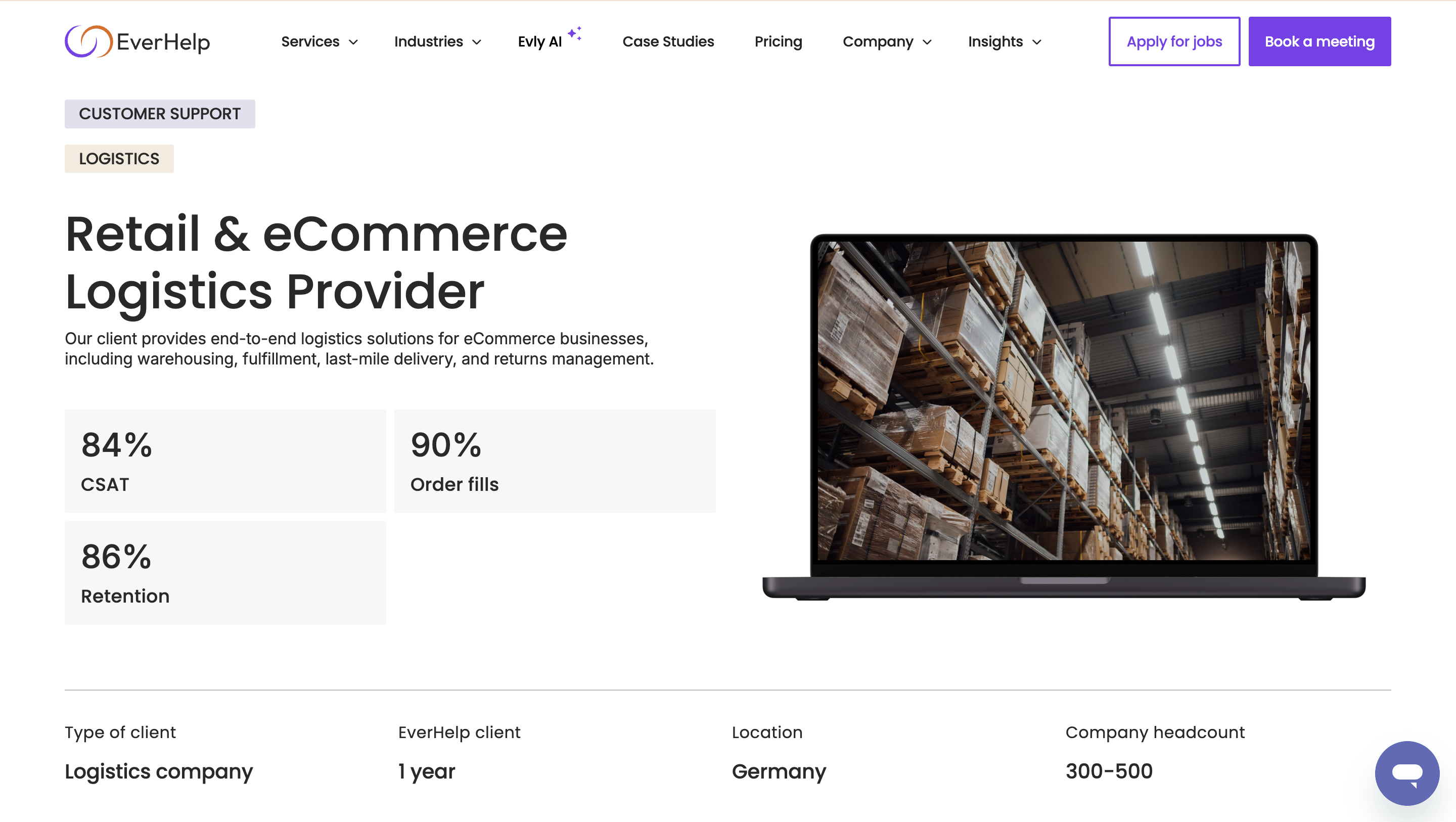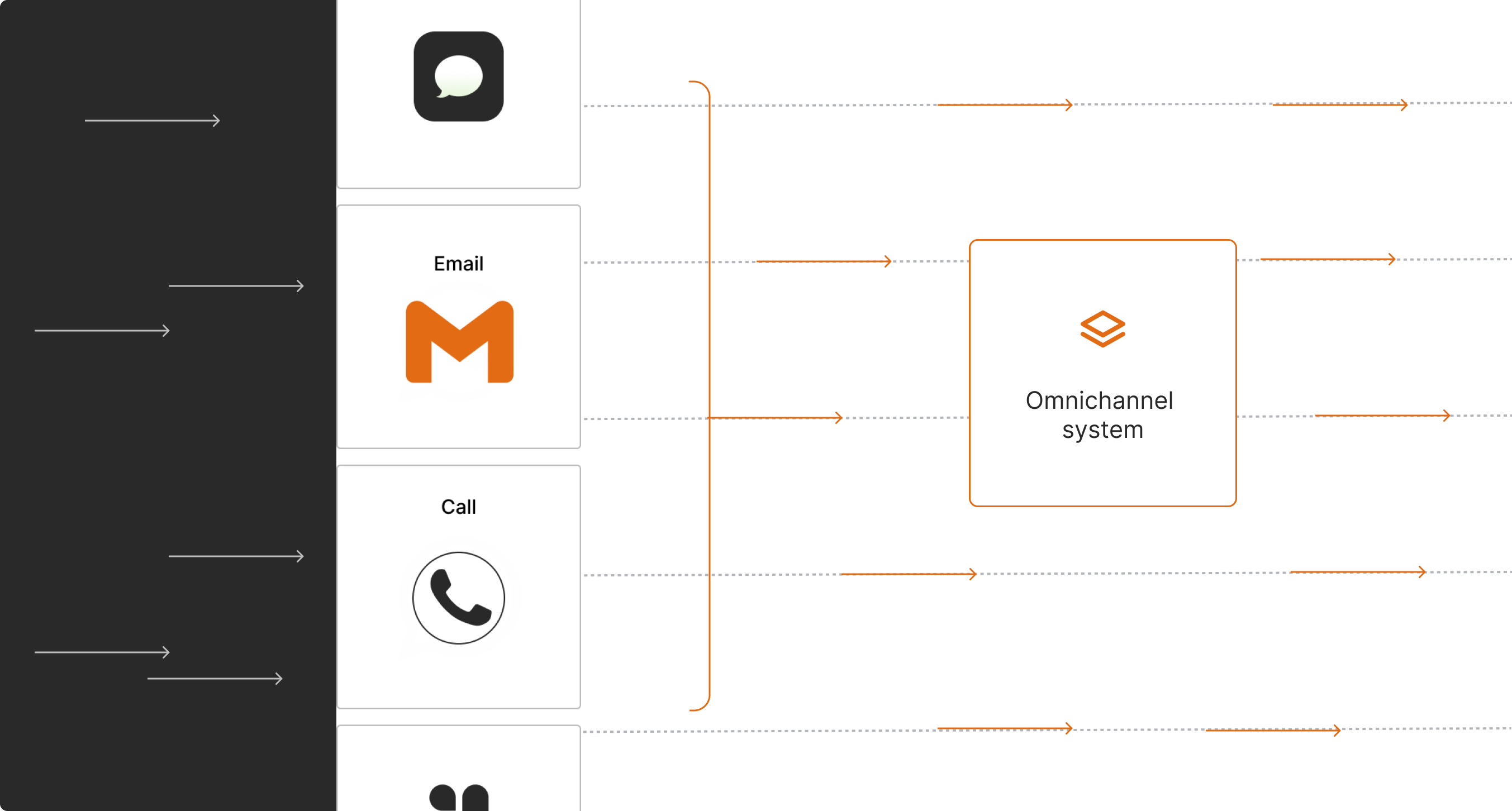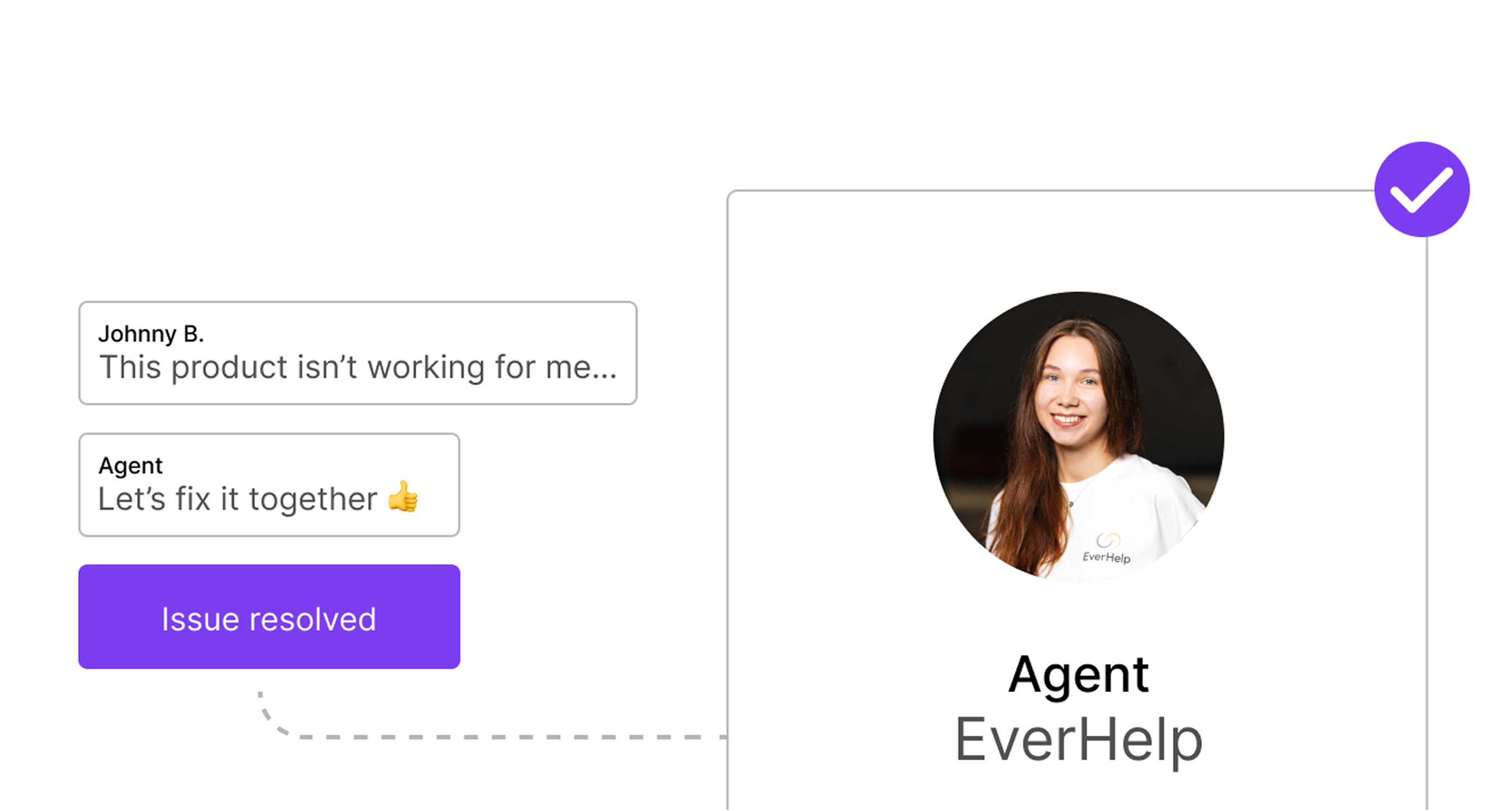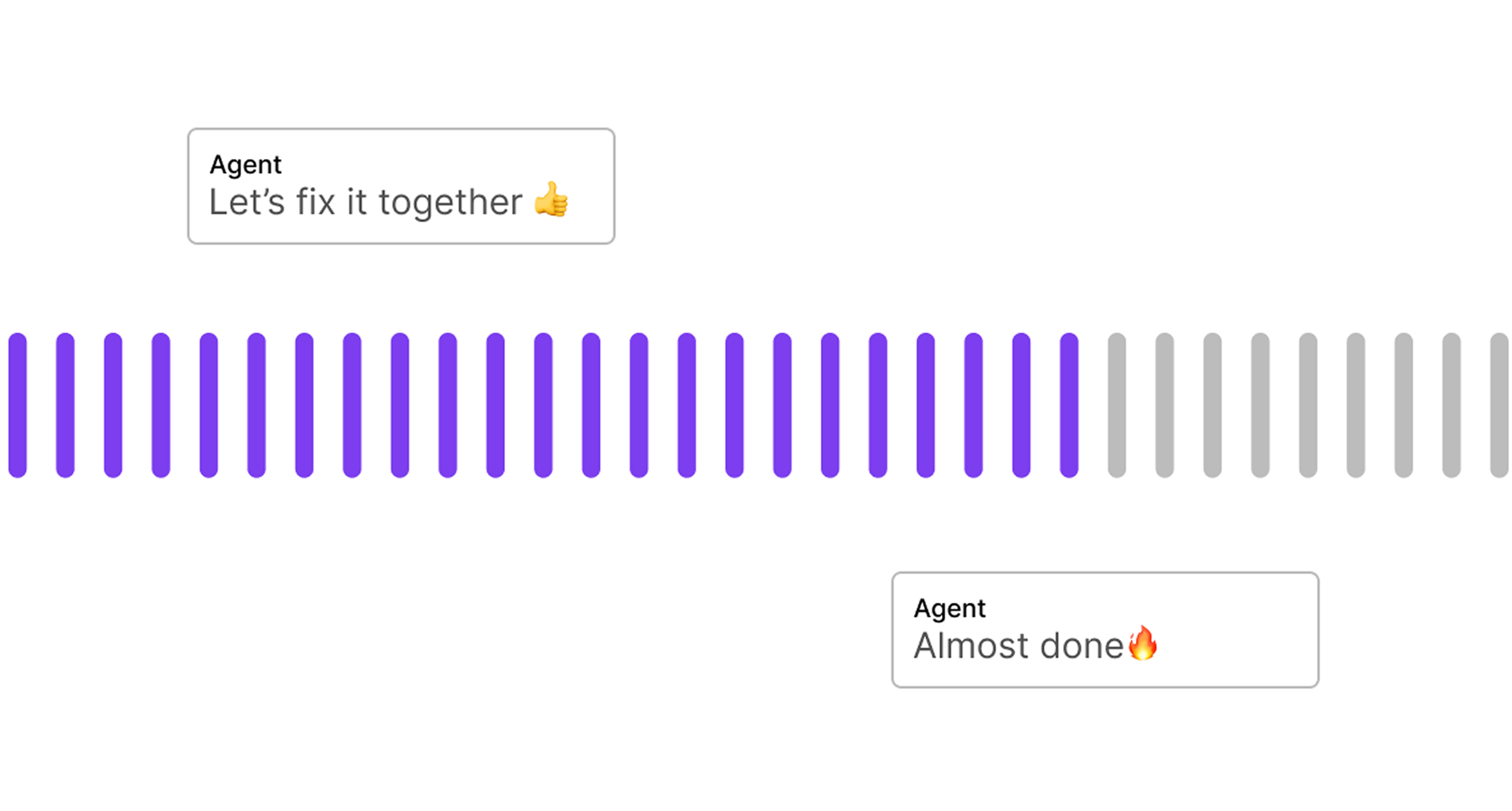Ecommerce Live Chat Support: The Complete Practical Guide 2026

TL;DR: Implementing live chat support in eCommerce significantly boosts customer satisfaction, sales conversion, and engagement by providing real-time assistance. It allows faster issue resolution, streamlines operations, and delivers valuable customer insights. Choosing the right software, integrating it with existing systems, and properly training or outsourcing agents ensures efficient handling of high inquiry volumes, improved metrics like CSAT and order fill rates, and a clear competitive advantage in a crowded market. For more detailed explanations, read the full article below.
52% of customers are more inclined to stay loyal to a brand that provides live chat support. Understandably so, as nobody enjoys waiting in line for the assistance they need. Some research also shows that users who engage with eCommerce live chat support are likely to spend over 60% more per purchase.
Following this, it’s clear that in today's competitive business environment, offering convenient and responsive customer service is a must. After all, customers have options, and they're likely to choose the brand that values their time and convenience. That’s where this article might help.
In this article, we want to break down how exactly businesses can use eCommerce live chat to win over their customers. We'll provide all the necessary information, from what to expect from live chat to the steps needed to adopt it.
If you've been considering live chat implementation for your eCommerce business but need assistance with staffing, training, or onboarding, book a meeting with us. We're here to help you every step of the way.
What are the Benefits of Live Chat for eCommerce?
We've already emphasized that implementing real-time customer support today is more of a necessity than an option. And given customers' preference for real-time chat, the pros must be clear. However, while the overall impact is evident, we understand that businesses need to thoroughly evaluate the specific benefits before making any changes. So, below, we have collected all the major benefits of live chat for eCommerce businesses.

1. Increased Sales Conversion
A recent study by Tidio found that, generally speaking, customers who interact with the business’s live chat are 513% more likely to buy something. Why is that?
You see, live chat allows eCommerce businesses to engage with customers at critical points in the buyer's journey, such as during product selection or checkout.
A customer browsing a website may have questions about a particular product's features or specifications. As eCommerce chat helps them get answers immediately, it’s more likely they will make a positive purchase decision.
2. Improved Customer Satisfaction
A satisfied customer is the primary goal of every eCommerce business, and good service is the key to achieving this.
If a buyer encounters an issue with a recent purchase, they want to be able to reach the customer support team and get assistance quickly. Giving a late answer or no response at all is one of the most widespread customer service mistakes in ecommerce, which may cause customer churn. Resolving the issue right away, on the other hand, is more likely to result in a positive customer experience and increased satisfaction.
This argument is supported by research, which shows that live chat for eCommerce yields around 73% of CSAT compared to other eCommerce support solutions.
3. Enhanced Customer Engagement
Using live chat for eCommerce fosters direct communication between businesses and their customers, helping build more meaningful interactions. For example, companies can use live chat to proactively engage with website visitors by offering assistance or personalized recommendations based on their browsing behavior.
By engaging customers in real-time conversations, eCommerce businesses can build rapport, address concerns, and guide them through the purchasing process, ultimately leading to higher engagement and customer loyalty.
4. Real-Time Support & Issue Resolution
Whether a customer has a question about a product, encounters a technical issue during checkout, or needs help with an order status, live chat eCommerse support gives them a chance to connect with an agent immediately and in real-time. Such a quick and efficient communication channel allows businesses to address customer concerns promptly, leading to faster issue resolution and a seamless shopping experience.
Here, however, the volume of incoming tickets and your team’s capacity needs to be closely considered. If the queries reach peak numbers, it’s best to consider the opportunity to outsource ecommerce live chat support.
This solution usually helps eCommerce businesses stay on top of their support game even during the busiest seasons, without losing any customers.
5. Cost-Efficiency & Operational Benefits
eCommerce live chat support can streamline customer service processes and reduce operational costs associated with traditional communication channels, such as phone or email. For example, live chat allows agents to handle multiple customer inquiries simultaneously, increasing efficiency and reducing the need for additional staffing.
6. Valuable Customer Insights
By analyzing chat transcripts and customer interactions, businesses can gain valuable insights into common inquiries, product issues, and areas for improvement. These insights open an opportunity for businesses to make more informed decisions about product offerings, marketing strategies, and customer service initiatives.
And suppose you don’t have the capacity to handle the analysis yourself. In that case, you can partner with knowledgeable professionals through live chat outsourcing, and they will collect and process the data for you.
7. Competitive Advantage of a Live Chat for eCommerce Website
Between 2019 and 2023, the global ecommerce landscape witnessed an unprecedented surge, with the number of ecommerce sites skyrocketing from 9.2 million to an astounding 26.5 million. The surge in 2021 alone marked an impressive 204% growth, illustrating the rapid expansion of online commerce.
With such a vast array of options available to consumers, standing out in the crowded marketplace is more significant than ever. Fortunately, offering eCommerce live chat support provides businesses with a distinct competitive advantage.
After all, considering all the previous points, companies that prioritize live chat demonstrate a steadfast commitment to accessibility, responsiveness, and customer satisfaction, which is exactly what sets them apart from their competitors.
How to Choose the Best eCommerce Live Chat Software
We have established that having an eCommerce live chat brings a lot of advantages to modern businesses. So, if you are now more drawn to the idea of implementing this support solution, it’s a good time to start doing research. The first point to look into is the eCommerce live chat software you could use.
Key Features and Functionality of eCommerce Live Chat to Consider
When deciding on a tool, it’s important to consider its functionality. Here are just a few of the major features you should pay attention to when deciding on a live chat software.
- Customization
When looking at any tool, it's important to consider how flexible it is in terms of usability. Your live chat will become a part of your website or application, which means it’s better if it somehow blends in with your brand’s style. So, pay attention to the tools that allow you to customize the live chat widget by changing color and adding your logo. This will contribute to creating a unique customer experience for your clients.
- Integration with other tools
One of the most important features is the integration capabilities of the live chat for eCommerce site. Businesses should opt for those eCommerce live chat software options that can be combined with your:
- Specific eCommerce platforms (Amazon, Shopify, etc.)
- Customer service ticketing platforms (Zendesk, Intercom, etc.)
- Payment processing apps (Square, Stripe, PayPal)
- CRM (Zoho, Hubspot, or other)
- As well as any marketing tools you use.
It’s these integrations that allow your support agents to closely collaborate within the team and with the other departments and create a seamless and smooth shopping experience for the customers.
- Analytics & reporting features
As we have previously mentioned, eCommerce businesses can use live chat support to collect and analyze customer data to improve their service further. However, it’s only possible if the software you chose allows it.
As such, businesses need to consider tools that offer capabilities for collecting and reporting data, such as:
- response times
- agent performance
- most popular request types
- case handling time
- etc.
With this information in hand, eCommerce companies can actually create working chargeback prevention strategies, build stronger customer relationships, and improve their CSAT scores.
- Automation capabilities
AI solutions are gaining popularity for a good reason. Because if you can use smart algorithms to automate at least part of the customer service tasks, that means you can structure your support processes more efficiently.
This is the reason behind a current debate on the efficiency of live chat vs chatbot. However, you don’t necessarily need to choose. You can have a live chat with an AI co-pilot or autopilot built in, designed to handle the first line of support. If you find an eCommerce live chat software that offers those features, your business will be able to automate such processes as:
- Ticket classification and routing
- Answering routine and repetitive questions
- Proactively reaching out to customers browsing through the website
- Translating conversations into customers’ native languages
- Analyzing customer data and gaining interaction insights
Comparing the Best Available Live Chat Tools
Considering this criterion will make it easier to find a solution that aligns with your business agenda. Nevertheless, research takes time, and we know that most businesses don’t have the luxury of extra free hours. That’s why we have done our research and collected a list of the best eCommerce Live Chat Software for owners to consider
Best Available Live Chat Tools Comparison
How to Implement eCommerce Live Chat Support on Your Ecommerce Site: 8 Simple Steps
Whether you are still looking for the perfect eCommerce chat tool or you have already picked your perfect solution, you can start planning the implementation process. To make it easier, we broke the setup procedure down into 8 simple steps.

1. Planning and strategy
Start by identifying your goals for implementing live chat. What are your primary goals? Are you aiming to improve customer service, increase sales, or reduce support costs? Clarifying your objectives will help guide your implementation strategy.
2. Choosing the right live chat software
Research and select a live chat software that meets your business needs. Consider the factors we’ve listed above, along with additional features such as ease of use, omnichannel and multilingual capabilities, and scalability.
3. Customization and branding
Customize the chat interface to match your brand identity and provide a seamless experience for customers. This may include branding elements (logo and specific colors), proactive chat triggers, and personalized greetings.
4. Integration with eCommerce platform
Now, you can move on to implementing live chat for eCommerce site to access customer data, order information, and product details in real-time. Seamless integration will allow agents to provide more personalized customer service.
5. Staffing
Determine the staffing requirements for your live chat support team. Consider factors such as the volume of inquiries, peak hours, SLAs, and language preferences of your customers. Source and hire agents who are knowledgeable, empathetic, and equipped to handle customer inquiries effectively.
6. Training and onboarding
Carve out extra time for training to ensure your representatives can meet the service standards. Provide comprehensive instructions for your customer support team on how to use the eCommerce live chat software effectively. Focus on communication skills, product knowledge, and best practices for delivering exceptional customer service. Additionally, train some part of the team to deal with extraordinary cases: show them how to win a chargeback as a merchant or how to handle hostile or aggressive cases.
7. Testing and optimization
Before fully rolling out the live chat for eCommerce website, thoroughly test the system. Pay attention to any technical issues or usability concerns. Gather customer feedback and from your agents to continually optimize the chat experience and improve performance.
8. Monitoring and analysis
Don’t forget to implement tools for monitoring live chat performance, covering metrics such as response time, resolution rate, and customer satisfaction. Use data analytics to gain insights into customer behavior and identify areas for improvement.
Best Practices for eCommerce Live Chat Support
Although, in theory, the aforementioned instructions might seem pretty obvious, it’s not rare for companies to face challenges when trying to introduce eCommerce live chat for the very first time. As it’s usually easier to understand exactly how to approach such a business change from practical experience, we’ve decided to share some best ecommerce customer service examples of live chat support implementation from the real world.
Having worked with over 100 clients, we have gathered a fair share of insights into the general support processes as well as most common challenges companies face when incorporating new communication channels. Acknowledging these issues, we have designed a special flow for the introduction of any support channel, including a live chat.
- Everything starts at the integration stage, when support infrastructure is being organized according to the business’s key objectives. That’s when our EverHelp Integration Managers build a special knowledge base for agents, plug in eCommerce live chat software and design workflows to handle different types of tickets accordingly. It’s at this point that we also setup classification and ticket forwarding procedures, and plug in your live chats into existing CRMs and support systems.
- Next follows the training stage. The hired agents are granted access to the previously-created knowledge base (which we create specifically for them). We also provide them with practical tasks so that they can learn how to a) handle various cases; b) work with software and different channels.
It’s worth noting that our training procedure follows a progressive channel mastery approach. So, most agents first start handling emails, then move on to live chat, and then further to more complex channels (e.g. → phone → social media → omnichannel). This model gives our representatives a chance to get more accustomed to the specifics of each project as well as better learn the business-related information and materials.
Live Chat & Success: The Story of Our Client
One of our clients, a well-established eCommerce logistics provider, approached EverHelp with an issue of an influx of order-related questions, including tracking updates, delivery delays, and return processing. Having worked with numerous eCommerce businesses, we knew that the key to success lay not just in adding more hands to the task, but in creating a well-structured, scalable support flow.
- Our Integration Managers began by mapping out the client’s communication processes and implementing a live chat system tailored to their operational goals.
- Within some time, the results spoke for themselves. With EverHelp’s dedicated team managing live chat in real time, the client achieved 84% customer satisfaction and increased their Order Fill Rate (OFR) to 90%.
- Our collaboration also allowed their internal teams to focus on logistics and fulfillment while we ensured customers received timely, accurate, and human-centered support.

Start Implementing eCommerce Live Chat Support Todayʼ
The implementation of eCommerce live chat support for businesses presents an excellent opportunity to elevate their customer service and drive growth. While there may be some challenges, such as staffing issues, integration complexities, and ongoing maintenance, they are far outweighed by the benefits of higher customer satisfaction and increased sales conversion.
And if you want to avoid these challenges altogether, you can outsource your live chat support to EverHelp. Our expertise and support help make the implementation process much smoother, as we align all the processes with your specific business objectives. By partnering with EverHelp, you're not only gaining access to innovative solutions but also to a dedicated team committed to your success. Reach out now to take the next step in transforming your customer support strategy and staying ahead in today's competitive eCommerce landscape. Talk to you soon!












.png)












.webp)
.webp)
.webp)



.webp)












